Who knew the mistletoe plant had such devious roots?
Mistletoe is a part of one of the oldest and most recognizable Christmas traditions around – the mistletoe kiss. And yet, as it turns out, the plant itself is a bit of a nuisance!
Each and every holiday season, mistletoe graces the hallways and front entrances of many a home. And as tradition goes, those who meet underneath it’s pointy green leaves must share a holiday smooch.
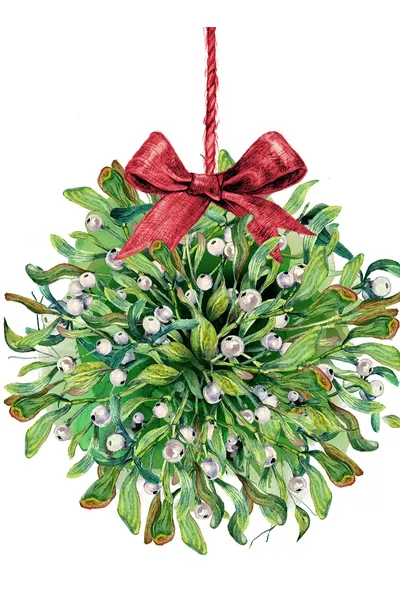
For some cultures, there are added rules to the mistletoe Christmas tradition. Such as, with each kiss, one of the white or red berries is removed. And when the berries are gone, the kissing must stop as well.
But as sweet and innocent as the mistletoe holiday traditions are, the plant is much more of a taker than a giver.
The Mistletoe Plant’s Devious Side
Beyond its glorious Christmastime use, the mistletoe plant in nature is a semi-parasitic plant. And one that in some instances, can even be deadly to its host.
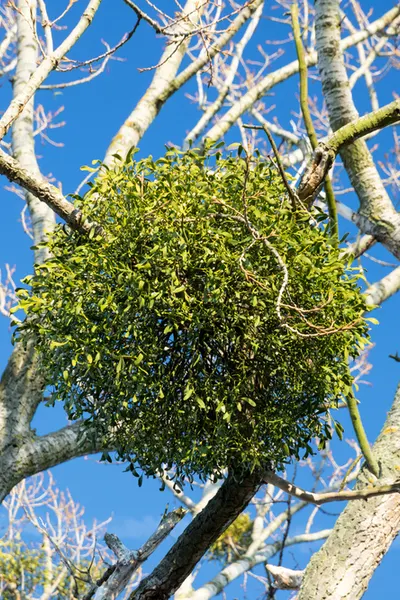
Although Mistletoe is not technically considered a full-blown parasite, it does prefer to steal most of its nutrients from other plants. Most notably, unsuspecting trees.
How Mistletoe Grows
Instead of sending roots into the soil at ground level, mistletoe becomes established by sending offshoots into the bark of trees. Most often, in the higher branches or forks.
How does it get there? The usual culprit are birds who love to eat the berries, and then “deposit” the seeds later.
In the process, once the plant becomes established, it steals both water and nutrients from the trees.
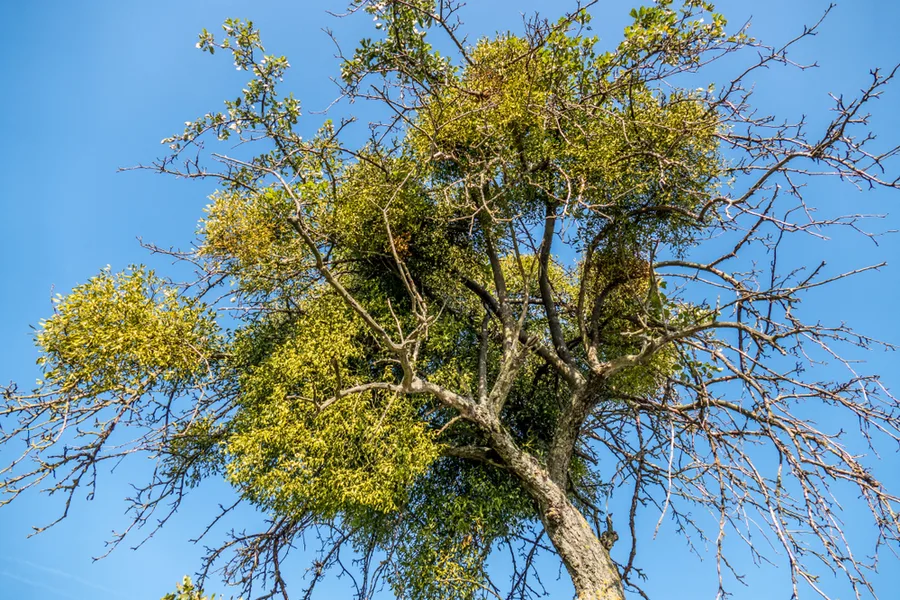
What makes mistletoe even more interesting is unlike a true parasite, it can live on its own. It is capable of producing its own food through photosynthesis. But instead, prefers to take the easier way out and use trees as a host.
Mistletoe can most often be found in common deciduous trees. such as oak, maple and hickory and pecan. But they can and will appear in nearly every variety, including pines.
How Mistletoe Plants Become A Christmas Tradition
So why did mistletoe become such a holiday star? Well, most likely, it was because it was the only thing still green in the dead of winter!
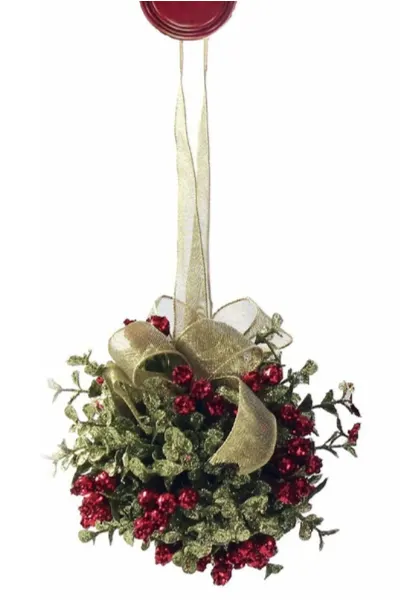
Mistletoe is an evergreen. And while the host trees lose their leaves each fall, the mistletoe stays bright and green. All through winter!
And that greenery, along with the bright white and red berries, was the perfect choice to brighten up the dreary indoors for Christmas. Affiliate Link : 5″ Artificial Mistletoe Kissing Ball
The Good Side of Mistletoe
The mistletoe does indeed have a few redeeming qualities.
For starters, in most cases, mistletoe plants will not kill a tree unless it already weak or stressed from drought or disease.
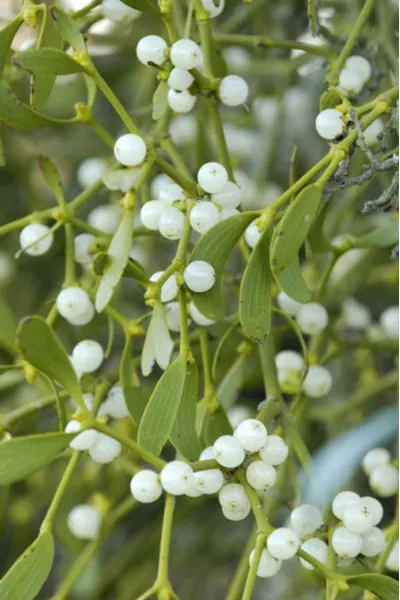
But more importantly, the tiny berries the plant produces are a major source of nutrition for foraging birds through. Especially in the long winter months when food is scarce.
That is, of course, as long as there are any left from all the Christmas smooching! For more holiday plant reading, be sure to see our article on Caring for Poinsettias.

This Is My Garden is a website dedicated to spreading the love and knowledge of gardening around the world. We publish two new garden articles each week. This article may contain affiliate links.
